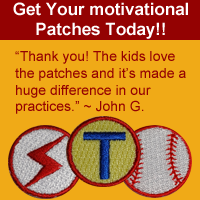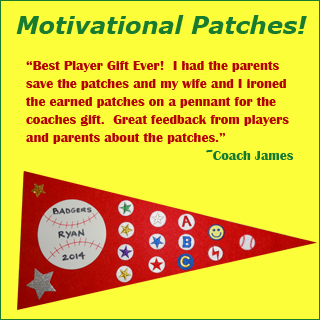Instructions For Ironing on Patches
Instructions are sent with each order.
Children should not iron on the patches; use the iron only with an adult present.
FIRST, a few patches may have a sticker on the back (on the glue side). If there is a sticker, remove it from each patch before ironing.
- To iron on the patches, first warm up the iron for 5 minutes (unless it is a rapid heat iron) on a medium (silk/wool) setting (or higher if possible without scorching the fabric). The iron must be hot enough to melt the glue.
- Then position the patch where you want it to permanently be with the glue side against the fabric.
- Press the iron firmly to the patch and hold for 10 seconds as a test. It usually takes 20-25 seconds to fully melt the glue, but irons vary, so be careful and don't burn or melt the fabric. If the glue isn't fully melted or if you handle the patch while the patch is still warm, the patch may start to come off the fabric. If this happens, iron it on again. To prevent burning of the polyester, or patches and to get better adhesion: First, position the patch in the desired location. Then turn the material inside out and iron through the material against the underside of the patch. This allows you to see areas where the glue was not fully contacting with the material, get better heating and overall a better application. The patches should stay on much better. Also washing in delicate, or hand wash and lying flat, or clothes line to dry helps.
- You MUST let the Patch set for a few minutes until it is cool before you handle it.
- Our patches have excellent adhesion that is superior to any other one inch iron-on patches we have tried. Once the patch is ironed on, it may not be possible to remove it without damaging the fabric.
- Patches can be ironed on most fabrics. They are often ironed on jersey sleeves, backs or fronts. The only problem you might experience is if you have a textured fabric that the glue can't adhere to. In those cases or if you don't want them to be permanent, you can put a few stitches in each one, or use fabric glue to hold it on. Patches probably won't stay on stretchy material such as socks or head bands unless you sew them on with a thread.
IMPORTANT: Don't wash or dry the fabric that has patches glued onto it using extreme heat -- hot water or an extremely hot dryer can soften the glue and cause the patches to come off the fabric. Wash on a warm or cool setting, and dry on a medium or lower setting -- the higher the heat, the more likely it is that the patch will come off. After repeated washing and drying, the patches may come off. The best way to ensure this doesn't happen is to use a needle and thread to put a stitch in the patch that secures it to the fabric -- that way the patch won't fall off and you can iron it back on.
To put patches on ball caps and similar items: You will need to use a glue such as "Goop", which can be purchased at Home Depot, Lowe's and many stores; you will need to let the glue dry for as long as recommended (24 hours for Goop). Super Glue does NOT work well. NOTE that they may not stick to all items, and the glue you use will determine how well they stick and stay.
Some leagues who re-use the jerseys from year to year do not want patches ironed on, and some leagues prohibit any type of emblem on the uniforms. If you are unsure of whether your league allows patches to be ironed on uniforms, check your league rules and be creative.
Alternatives to ironing patches on uniforms: Teams in leagues that don't allow patches on uniforms still use QCBaseball patches to motivate their players. Here are some ideas for where to put patches:
- On a practice T-Shirt (a shirt that can be worn to practice and casually)
- On baseball bags
- On a team banner near each player's name
- Given to the player for them to keep as a keepsake
Most Recent Blog Posts
Working With Players on Focusing on the Correct Part of the Baseball when Hitting (October 15 2016)
Getting More Accurate Throws From Your Team (April 5 2016)
Just found your website this evening and wanted to say THANK YOU so much for the fantastic videos! I am a 35 yr. old dad who never played baseball growing up but loves the game and have wound up being an assistant coach for my son's youth team up in Wisconsin this spring. Since I don't know a lot about how to coach and work with the boys (but want to), I began searching online and found your great website. I look forward to getting out there in the next few days and practicing many of your tips and exercises.
Thanks again for the excellent videos!
- Aubrey L.








